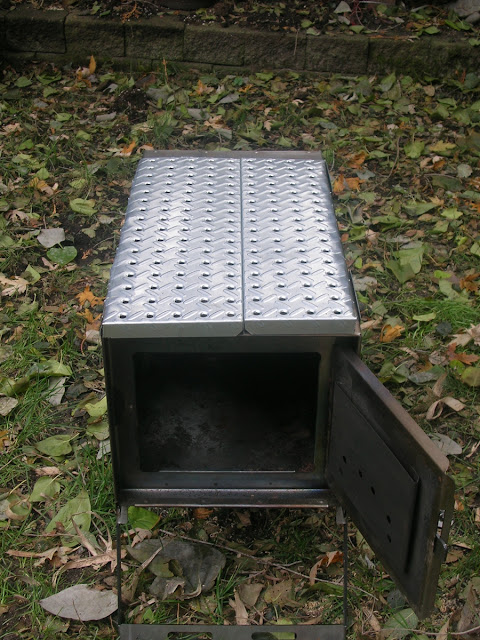Canadian Outdoor Equipment sells a false bottom for the stove but it is quite pricey and heavy. Came up with my own solution using a metal pegboard from Home Depot. The length was a perfect fit and the sides were already pre-bent. Measurements showed that a single piece would be too large to try and fit through the door. So I cut a chunk out of the middle of the pegboard and fold down a single side on each piece. The two pieces cover the bottom of the stove and fit tightly with a friction fit, but can also be easily removed if needed. One piece is more narrow than the other so it can fit nested into the other when inverted. Here they are on top of the stove and then placed in the burned chamber...
Galvanized pegboard made into a false bottom.
In burn chamber
The new false bottom doesn't interfere with the storage of the collapsible stove pipe...
Of course galvanized metal can give off nasty fumes when initially exposed to fire. The stove has since been used and the toxic coating safely burned off.
Also ended up making a carrying case of sorts for transportation and minimize any soot transfer. I used scraps of fire-retardant canvas to make a case that snaps open and closed. With some grommets and cordage, two carry handles exit from the sides to make lifting easier.
Scrap canvas pieces made opened up
The design allows for just one side of the carry case to open so that access to the stove interior is quick and easy.
opened flap to access stove door
Once everything is snapped up, the case does its job to cover the stove. In camp, I've used the empty case (still snapped into shape) as a way of collecting tinder and small branches.
Finished carry case
It was used well on my late fall trip back in October and fits perfectly on top of the wanigan for transport across portages.


















